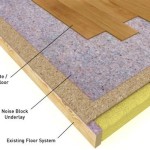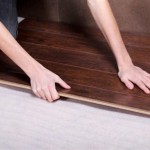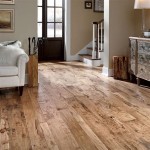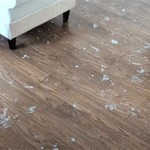How to Fix Damaged Floor Joists
Floor joists are critical structural components that support the weight of floors, furniture, and occupants within a building. Over time, and particularly in older structures, these joists can become damaged due to a variety of factors including moisture, insect infestation, rot, and excessive load. Properly addressing damaged floor joists is essential for maintaining the structural integrity of a building and ensuring the safety of its inhabitants. This article provides a comprehensive guide on how to identify, assess, and repair damaged floor joists.
Identifying Floor Joist Damage
The first step in repairing damaged floor joists is accurately identifying the problem. This requires a thorough inspection of the joists, typically found in basements, crawl spaces, or accessible areas below the floor. Looking for visual cues is crucial. Common signs of damage include:
- Sagging floors: A noticeable dip or unevenness in the floor surface may indicate weakened or broken joists.
- Bouncing or springy floors: This suggests insufficient support, often caused by compromised joists.
- Cracked, split, or splintered wood: These are physical indicators of stress and potential structural weakness.
- Visible mold or mildew: This signifies moisture intrusion, which can lead to rot.
- Insect activity or damage: Look for small holes, sawdust-like residue (frass), or evidence of insect tunnels.
- Water stains: Stains on the joists can indicate leaks or past water damage, contributing to rot.
In addition to visual inspection, it is recommended to use a probing tool, such as a screwdriver or awl, to test the wood's integrity. If the tool easily penetrates the wood, it suggests rot or decay. It is also advisable to check the area for signs of excessive moisture, such as condensation or dampness. Pay close attention to areas where joists are in contact with foundation walls or other structural elements, as these are common areas for moisture accumulation and subsequent damage.
Accurate identification also involves determining the cause of the damage. Understanding the cause is crucial for preventing future problems. For instance, if a leaking pipe is causing rot, the pipe must be repaired before repairing the joist.
Assessing the Extent of the Damage
Once damage has been identified, it's imperative to determine the extent of the problem. This assessment will dictate the appropriate repair method. The assessment should consider several factors:
- Location and size of the damaged area: Is the damage localized to a small section of the joist, or does it extend along a significant portion of its length?
- Depth of the damage: How deep does the rot or decay penetrate into the wood?
- Number of affected joists: Are only a few joists damaged, or is the damage widespread throughout the floor system?
- Structural significance of the joist: Is the joist a primary support beam, or is it a secondary joist that carries less load?
In many cases, it may be necessary to remove some of the damaged wood to fully assess the extent of the problem. This can be done using a chisel, saw, or other appropriate tools. Be careful not to remove more wood than necessary, as this can further weaken the joist.
For significant damage or if there is any doubt about the structural integrity, consulting a qualified structural engineer or experienced contractor is highly recommended. They can perform a detailed assessment, determine the appropriate repair method, and ensure that the repairs are carried out safely and effectively. Furthermore, local building codes may require permits and inspections for structural repairs, so checking local regulations is important.
Repairing Damaged Floor Joists
Several methods can be used to repair damaged floor joists, depending on the extent and nature of the damage. Common repair techniques include:
Sistering
Sistering involves attaching a new joist alongside the damaged one to provide additional support. This is a common and effective repair method for joists with moderate damage or weakening. The new joist, typically made of the same material and dimensions as the original, is carefully positioned alongside the damaged joist and securely fastened using construction adhesive and fasteners, such as screws or nails.
Before sistering, it is crucial to ensure that the damaged joist is properly supported. This may involve using temporary supports, such as adjustable steel posts or wood supports, to lift the joist back into its original position. The new joist should extend beyond the damaged area by at least several feet on either side, providing adequate overlap and reinforcement. The fasteners should be spaced closely enough to ensure a strong and secure connection between the two joists.
Properly preparing the surface of the existing joist is important. This involves cleaning the surface to remove any loose debris, dirt, or mold. Applying a wood preservative to the existing joist can help prevent future decay.
Reinforcement with Flitch Plates
A flitch plate, usually steel, can be added to the side of the joist to add strength and stiffness. This is particularly useful when the existing joist has significant decay but is still partially intact. A layer of construction adhesive is applied between the wood joist and the flitch plate. The flitch plate is then bolted to the joist, sandwiching the wood between the steel. The bolt pattern should be carefully calculated to maximize the effectiveness of the reinforcement. The thickness of the flitch plate and the type of steel will depend on the load requirements and the extent of the damage. A structural engineer can provide guidance on selecting the appropriate materials and specifying the bolt pattern.
Replacing the Joist
In cases of severe damage, such as extensive rot or a complete break, it may be necessary to replace the entire joist. This is a more involved process that requires careful planning and execution.
Before removing the damaged joist, it is essential to provide temporary support to the surrounding floor structure. This can be accomplished using temporary walls or adjustable steel posts. The support should be positioned close to the damaged joist to minimize the risk of sagging or collapse.
Once the temporary support is in place, the damaged joist can be carefully removed. This may involve cutting the joist into smaller sections to make it easier to handle. Be careful not to damage any adjacent joists or structural elements during the removal process.
The new joist should be the same size and material as the original. It should be carefully positioned and aligned with the existing joists. The new joist should be securely fastened to the supporting beams or headers using appropriate fasteners, such as nails, screws, or joist hangers.
When replacing a joist, it is important to consider the potential for future damage. Applying a wood preservative to the new joist can help prevent rot and insect infestation. Ensuring proper ventilation in the crawl space or basement can help reduce moisture levels and prevent future decay.
Using Epoxy Resins
For localized areas of rot or decay, epoxy resins can be used to fill the voids and restore structural integrity. This method is best suited for smaller repairs and requires careful preparation and application.
The first step is to remove any loose or decayed wood from the damaged area. This can be done using a chisel, scraper, or wire brush. The area should be thoroughly cleaned to remove any dirt, dust, or debris.
Next, the epoxy resin is mixed according to the manufacturer's instructions. The resin is then carefully applied to the damaged area, filling all voids and cracks. The resin should be allowed to cure completely before any further work is done.
After the resin has cured, the area can be sanded or shaped to match the surrounding wood. A wood preservative or sealant can be applied to protect the repaired area from future damage.
Epoxy resins are a good option for repairing localized damage, but they are not a substitute for sistering or replacing joists in cases of severe damage. It is important to select the appropriate epoxy resin for the specific application and to follow the manufacturer's instructions carefully.
Addressing the Root Cause of the Damage
Regardless of the repair method used, it is essential to address the root cause of the damage. Failing to do so will likely result in the damage recurring in the future. Common causes of floor joist damage include:
- Moisture: Repair any leaks, improve ventilation, and ensure proper drainage.
- Insects: Treat the area with an appropriate insecticide and take steps to prevent future infestations.
- Excessive Load: Reinforce the floor system to distribute the load more evenly.
By addressing the underlying cause of the damage, it is possible to prevent future problems and ensure the long-term structural integrity of the floor system.
Fixing damaged floor joists is a complex process that requires careful planning, execution, and attention to detail. By following the steps outlined in this article, it is possible to effectively repair damaged joists and maintain the structural integrity of a building. However, it is important to remember that safety should always be the top priority. If there is any doubt about the ability to safely and effectively carry out the repairs, it is always best to consult a qualified professional.

Fix Replace Damaged Floor Joists How To Sister A Joist

How To Repair A Butchered Floor Joist Fine Homebuilding

How To Fix A Broken Joist

Everything You Need To Know About Floor Joist Repair

How To Repair Cut Or Damaged Floor Joist Bolting New Existing

Floor Joists Common Problems And Joist Repairs

How To Fix Sagging Floor Joists Rogue Engineer

Floor Joists Common Problems And Joist Repairs

Repairing Floor Joists What Homeowners Need To Know

Everything You Need To Know About Floor Joist Repair
See Also







